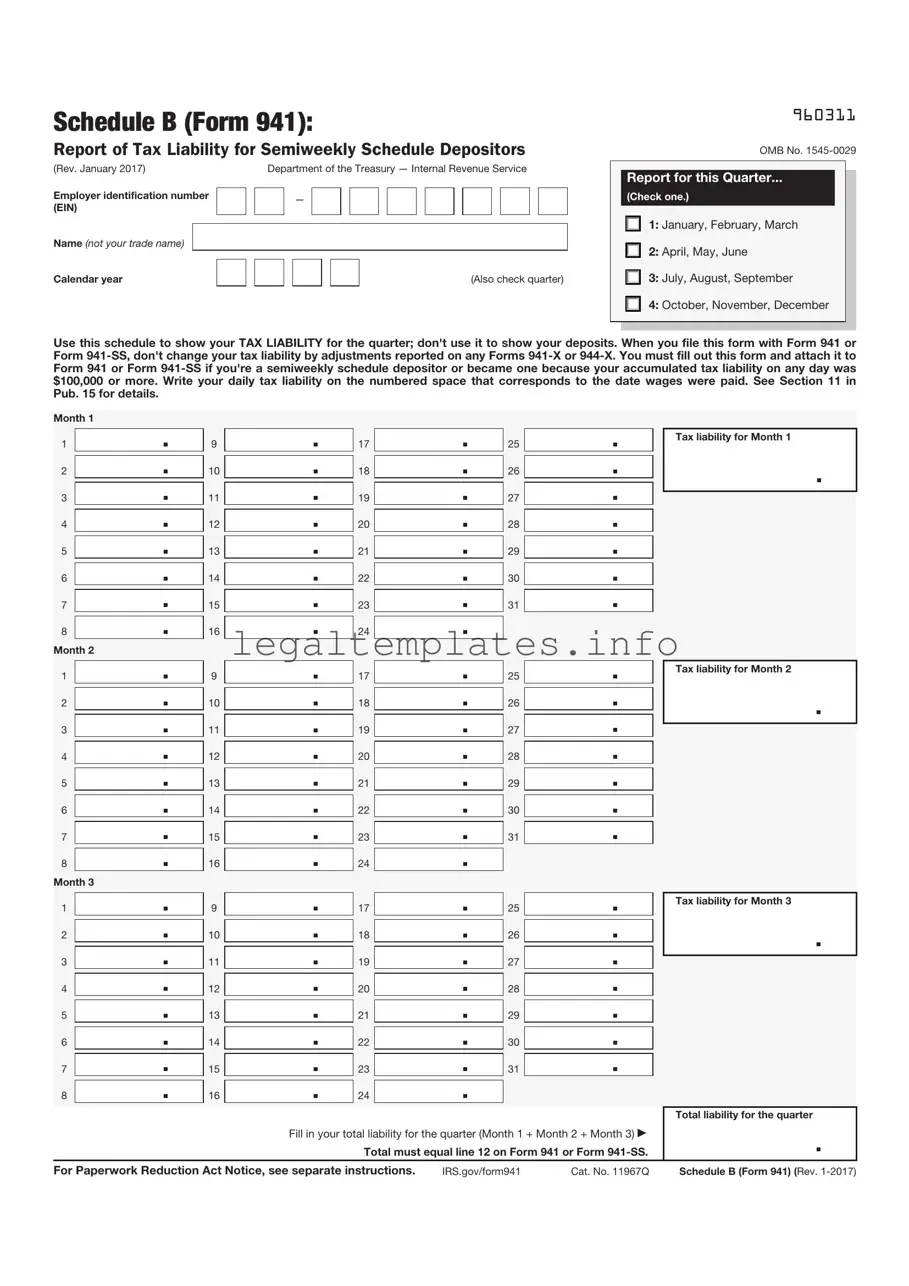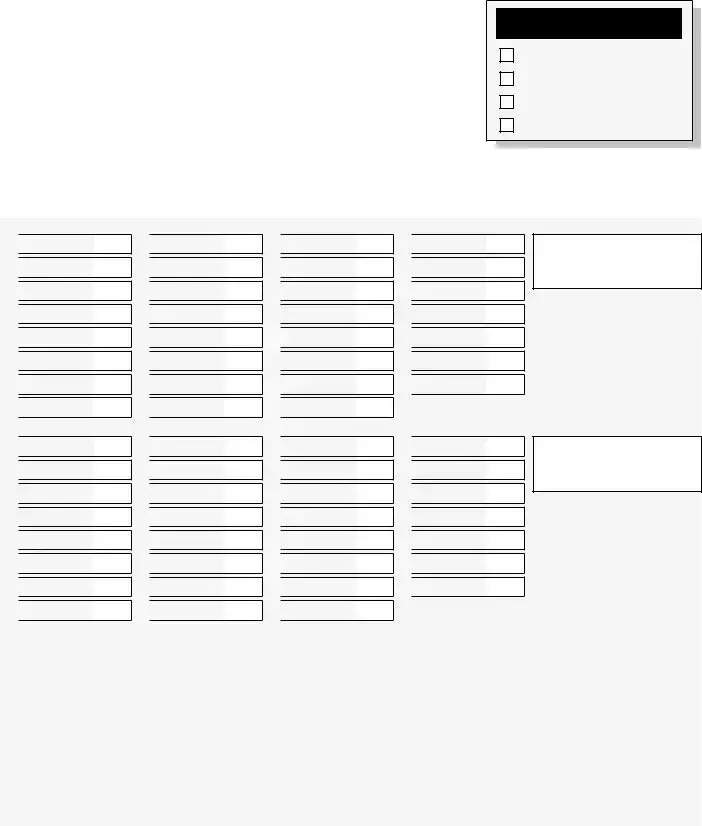The IRS Schedule B (Form 941) is closely akin to the IRS Form 940, which is the Federal Unemployment Tax Annual Report. Both of these forms are pivotal for employers, as they relate to reporting taxes withheld from employees' wages. The Form 940, similar to Schedule B, necessitates detail on taxes collected for unemployment, pinpointing the total amount due to the IRS. The primary distinction is their frequency and the type of tax reported, with Form 940 being annual and focusing on unemployment taxes, while Schedule B is more frequent and concentrates on withholding taxes.
Another document that resembles the IRS Schedule B (Form 941) is the IRS Form 945. This form is used to report withheld federal income tax from non-payroll payments, including gambling winnings, pension distributions, and backup withholding. Like Schedule B, Form 945 plays a crucial role in ensuring taxes withheld are properly reported to the IRS. Both necessitate meticulous record-keeping and accurate reportage of withheld taxes, albeit for different income sources.
The W-2 form, issued by employers, is another document that shares characteristics with the IRS Schedule B (Form 941). W-2 forms detail an employee's annual wages and the amount of taxes withheld from their paycheck. In essence, the information from W-2 forms feeds into what is reported on Schedule B and the summary Form 941, making them interlinked in the tax reporting process. Both serve the fundamental purpose of communicating to the IRS what has been withheld from employees' earnings, albeit at different stages and perspectives in the reporting cycle.
IRS Form W-3, the Transmittal of Wage and Tax Statements, also aligns closely with the Schedule B (Form 941) in purpose and function. Form W-3 is essentially the summary form accompanying all filed W-2 forms to the Social Security Administration, summarizing the total employee earnings, Social Security wages, and Medicare wages reported by an employer. Although it's directed to a different government agency, it complements the wage and tax reporting process integral to Schedule B, emphasizing aggregated data over the periodic details Schedule B captures.
Similarly, the IRS Form 1099 series, particularly Form 1099-MISC, used for reporting miscellaneous income payments, shares similarities with Schedule B (Form 941) in the broader context of tax reporting. Like Schedule B, various 1099 forms are crucial for reporting certain types of payments and the associated withholdings outside of the traditional employer-employee relationship. Both forms are essential in providing the IRS with a comprehensive view of taxable income and withholdings, albeit for different income categories.
Last but not least is the IRS Form 1096, which is akin to the transmittal letter for all 1099 forms sent to the IRS. This form is a summary report that accompanies the submission of Forms 1099, similar to how Form W-3 accompanies W-2 forms. While IRS Form 1096 differs in its specific function and the types of income it pertains to, it shares the broad objective of Schedule B (Form 941) in collating and summarizing tax-related information before it is submitted to the federal tax authorities. This ensures that the data reported is organized and facilitates the reconciliation of amounts reported with amounts withheld or paid.


 .
. .
. .
. .
. .
. .
. .
. .
. .
. .
. .
. .
. .
. .
. .
. .
. .
. .
. .
. .
. .
. .
. .
. .
. .
. .
. .
. .
. .
. .
. .
. .
. .
. .
. .
. .
. .
. .
. .
. .
. .
. .
. .
. .
. .
. .
. .
. .
. .
. .
. .
. .
. .
. .
. .
. .
. .
. .
. .
. .
. .
. .
.